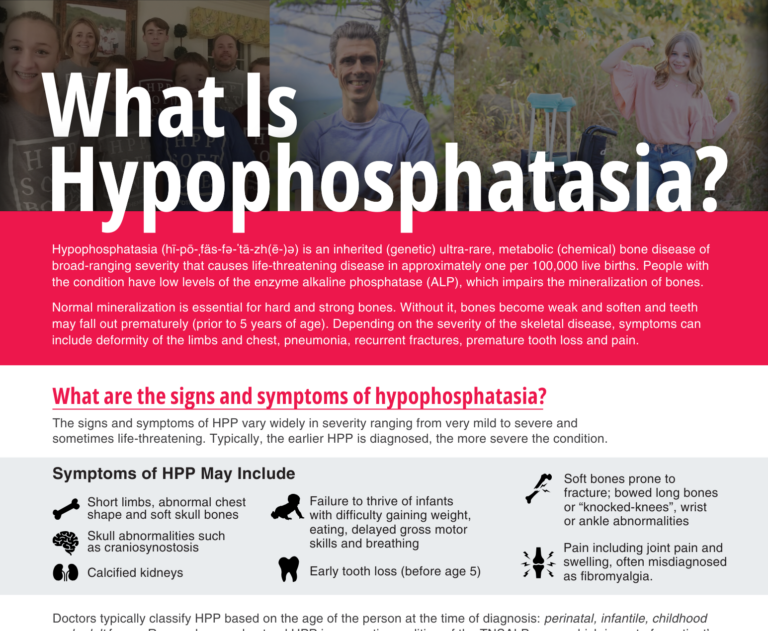What is
Hypophosphatasia
Hypophosphatasia is an inherited (genetic) ultra-rare, metabolic (chemical) bone disease of broad-ranging severity that causes life-threatening disease in approximately one per 100,000 live births. People with the condition have low levels of the enzyme alkaline phosphatase (ALP), which impairs the mineralization of bones.
Normal mineralization is essential for hard and strong bones. Without it, bones become weak and soften and teeth may fall out prematurely (prior to 5 years of age). Depending on the severity of the skeletal disease, symptoms can include deformity of the limbs and chest, pneumonia, recurrent fractures, premature tooth loss, and pain.

- Short limbs, abnormal chest shape and soft skull bones
- Skull abnormalities such as craniosynostosis
- Calcified kidneys
- Failure to thrive of infants with difficulty gaining weight, eating, delayed gross motor skills and breathing
- Early tooth loss (before age 5)
- Soft bones prone to fracture; bowed long bones or “knocked-knees”, wrist or ankle abnormalities
- Pain including joint pain and swelling, often misdiagnosed as fibromyalgia.
Doctors typically classify HPP according to the age at which symptoms first appear: perinatal, infantile, childhood, adult, or odonto forms. Researchers understand HPP is a genetic condition of the TNSALP gene, which is part of a patient’s genetic makeup, regardless of when it is diagnosed.
There is still a lot to learn about the role of alkaline phosphatase in the body. Many patients are misdiagnosed with rickets (nutritional or x-linked hypophosphatemic), fibromyalgia, or osteoporosis. There are also considerable questions about the role of ALP in the body’s neurochemistry. More research is needed in this area to understand the full implications.
While there is currently no cure for hypophosphatasia, a treatment to help manage symptoms is available. In 2015, asfotase alfa (Strensiq™) was approved for use in the US, the European Union, and Canada for pediatric-onset HPP, and in Japan for HPP with onset at any age. The medication is an injection given multiple times per week subcutaneously. It is a recombinant (factory-made) form of ALP that has a bone-targeting component.

